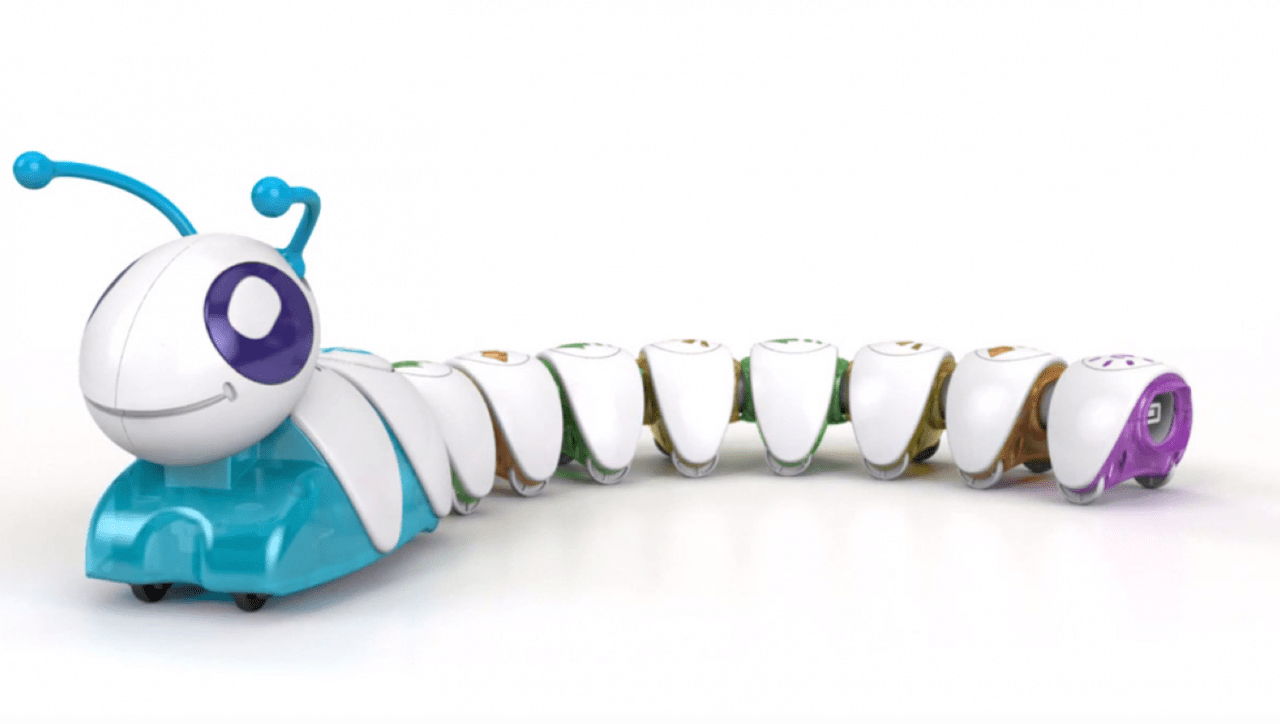February 12, 2016 Updated 2/12/2016
Email Print
Adrianne Pasquarelli
Advertising Age

Mattel Inc. The Code-A-Pillar from Mattel Inc.’s Fischer-Price brand is designed to help toddlers learn to code by swapping different segments of the brightly-colored plastic toy.
A town made out of Play-Doh, a pen that draws 3-D in plastic and a coding caterpillar, oh my! They are just some of the must-see products at this year’s Toy Fair, the 113th trade show taking place Feb. 13 to 16 in New York City.
While giant brands Mattel Inc. and Hasbro Inc. will have a large showing at the event, smaller companies such as Wonder Workshop and GoldieBlox will also be in attendance. In fact, more than 300 of the 1,237 exhibiting brands will be newcomers, up from just under 200 last year. The uptick is no coincidence; event organizers are making a concerted effort to secure space for first-time exhibitors in order to showcase the widest spectrum of innovative toys, said a spokeswoman. Since the event has reached capacity at the Jacob Javits Center, space for existing exhibitors was frozen.
Retailers can expect to see a mix of classic play toys — Hasbro will showcase five new products from its popular Play-Doh line, now in its 60th year, as well as new collections from Nerf — and pioneering ones — Zing Toys is exhibiting StikBot, a stop-motion animation studio that includes a green screen. RedwoodVentures Ltd., a Bella Vista, Ark.-based company, created AtmosFlare. A pen that draws dimensionally in a photopolymer material that hardens into smooth sculptures, it’s one of the first of its kind targeted to teens.
A lot of brands are focusing on the marketing word du jour: coding. Mattel’s new Fischer-Price Think & Learn Code-A-Pillar, which encourages sequencing and critical thinking skills among preschoolers, has been getting a lot of buzz since it was shown at January’s Consumer Electronics Show.
While Mattel has not said much publicly yet, reports from CES said the Code-A-Pillar — with individual, brightly colored plastic body components — allow children to separate and reconnect the various parts, each of which provides a different command to the overall toy, such as which way to turn. By putting the individual parts in a different order, the child can make the toy do something different.
Seeing a toddler play with it may not seem like coding, but interactive toys come equipped with some degree of coding whether companies market it or not, experts say.
“Coding is something parents like to hear, but kids putting together a Lego set have the rudiments of coding,” said Chris Byrne, a toy industry consultant and content director for TTPM (Toys, Tots, Pets & More). “The best toys that are being marketed as coding are toys that are really immersive and fun for kids to play with — after an hour of homework, who wants to do more homework?”
He noted a standout from Wonder Workshop, which sells robotics-based toys that are fun, yet teach as well.
El Segundo, Calif.-based Mattel is also banking on new offerings from its Barbie franchise, which now include more diverse ethnicities and body types. The manufacturer is also rolling out a line of DC Super Hero Girls, based on the comic book characters.
Byrne also stressed that successful marketers will create toys around which kids can build a community, in this hyper-social age. Even 2014’s Rainbow Loom, a low-tech item molded from ABS which kids use to create bracelets and other items from rubber bands, was wildly popular because children continually shared their projects on YouTube.
“Looking at ways to leverage social media in a wholesome and interactive way that also engages kids in classic play — that’s the next generation of all this technology,” Byrne said.
The Toy Industry Association Inc., which hosts the Toy Fair, will also debut Play Fair, presented by Lego and Nickelodeon, for the first time this year on Feb. 13 and 14 at the Javits Center. The event, which is open to the public, will display a number of new and existing toys for families, and include a Paw Patrol slide and Teenage Mutant Ninja Turtle tunnels.
“We’re focusing on ways to connect with consumers,” explained the Toy Industry spokeswoman.




























